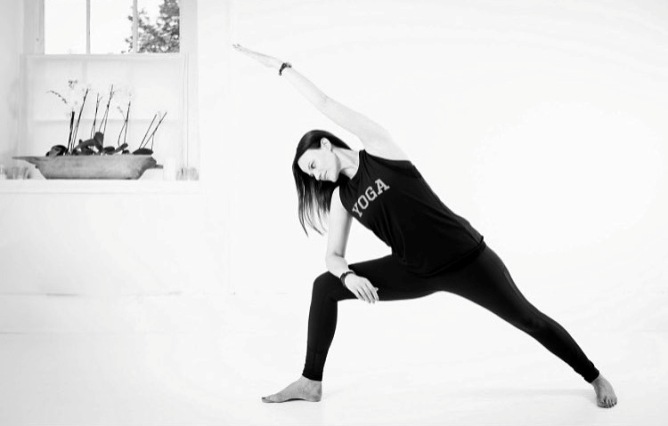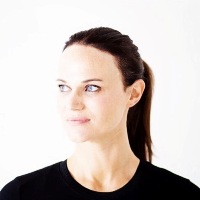As a teacher for 15 years and a practitioner for 20, I’ve seen yoga change and evolve into a hugely popular activity.
Is this a good thing?
“Yoga chitta vritti nirodha.” Yoga is the silencing of the modifications (fluctuations) of the mind. This is Patanjali’s definition of yoga.
Let me make myself abundantly clear: I love yoga. I do. I love teaching it, I love practising it, and I love to see the profound effects it can have on individuals. But I must also question: in recent times, has it lost its vast historical and philosophical mind?
For me, my yoga classes were strong from the get-go. I practised in a busy, yet basic studio in Bondi Junction, Sydney and quickly became hooked. I am in awe of my teachers at this particular studio, which, to this day, is still one of the best studios I’ve attended—and I’ve attended lots.
They led me through strong, mindfully adapted choreographed sequences that were intelligently created by the studio owners, Bianca and Simon. Their incredible knowledge of anatomy and physiology combined with their vast knowledge of yoga and its philosophy helped to create my most incredible introduction to yoga.
If I struggled, they’d help me. If I pushed myself too far, they’d stop me. They would never allow any one of the 30+ students to go past their body’s potential. It was never about the beautiful imagery of the end pose; it was about the progression, the journey, the concentration, and sense-withdrawal it instilled. This was my yoga.
Fast forward to my Ashtanga days and boom. It was all about push, push, push, move, move, force.
Now, don’t get me wrong—I loved Ashtanga.
With an authorized teacher, students learn the art of skillful and mindful progression, while finding their way through the practice slowly, in a Mysore style, which allows them to focus on their own practice and stop when necessary. It’s strengthening and invigorating, yet calming and slightly addictive.
However, unfortunately, there are way too many gung ho teachers who like to prove their own yoga/gymnastic prowess, forcing their students into the postures that only they themselves are competent in.
This has created an epidemic of egos, and sadly, all too many injuries. This is certainly not exclusive to gung ho Ashtanga teachers by any means—yoga studios are churning out this new breed of teacher at an alarming rate. They’re teaching power yoga, dynamic yoga, and various different fusions, which, if you find a good teacher can be wonderful. And if not, it can be a recipe for spiritual and physical disaster.
Regardless of the teacher, the emphasis should be on helping the student via progression, not taking shortcuts to achieve the end result.
A one-stop yoga shop.
The onset of social media and quick-start Instagram yogis has made yoga even more popular. The visual imagery of yoga seems to have taken over from the mindfulness tenfold.
Does this mean Instagram has broken yoga?
I see both the pros and the cons.
The fact that yoga has been exposed to the masses is wonderful. Its influence and the benefits are filtering down to schools and nurseries. More and more educational authorities are including yoga in their curriculum; teaching yoga and mindfulness to youngsters can only be a good thing, right?
Well yes, I strongly believe that yoga should begin at a young age. It helps to grow strong minds and introduces the specific breathing techniques, or pranayama, to help them cope with the many stresses of school, hormonal changes, family life, friendships, and body issues.
Unfortunately, what I see on social media is quite the opposite. Yoga teachers are constantly applauded for their ability to handstand and backbend. And often included in many of these Instagram accounts are flawless pictures of yogis who seem to have fallen straight out of bed into a scantily clad, tanned, toned yoga position. Is this empowering to a self-conscious child, or is this creating more insecurity through imagery that—for the most part—is unachievable?
It’s great to celebrate the human form, but surely it would be far better to show yoga in a more realistic light with yogis of all skin colours, shapes, sizes, and ages. Surely we can do better than aspiring to a stereotype.
Yoga is about ridding the body and mind of ego. But social media yoga is a version that negates the whole ethos of yoga. Is this simply the evolution of yoga and what it’s become? Is yoga about life, and about mental and physical detachment, or has evolution turned yoga into something more akin to desire?
“Good” teachers are now determined by the size of their following and the ability to balance and invert, rather than their experience and knowledge. Teachers are more frequently qualifying online, choosing no yoga lineage at all. I taught for 13 years before I felt I had gained enough knowledge to run workshops—I couldn’t imagine relaying to students what I’d learned in my first 200-hour accreditation.
I’m currently in the process of writing a book on this and other important issues. The first request publishing companies will undoubtedly have is for me to increase my social media presence and following before considering taking me under their wing—which will contradict much of what I’m writing! Crikey!
How did the great masters and teachers ever cope without Insta? Is corporisation and consumerism commercialising the purity and mystery of yoga?
There’s much controversy within the yoga world, too. Greed seems to play a big part. Big companies have jumped on the popular yoga bandwagon and cashed in. Ruthless business men and woman prey on vulnerable, naive souls. Is big business taking over this pure and ancient science?
A relevant story was recently made public—an argument between a big clothing company and a couple of big-name yoga teachers.
The big company filed a lawsuit against one of the teachers for a short-lived “defamatory” Instagram story she posted. The teacher in question is a beautiful full-figure teacher who has spoken out about the company in question, accusing them of only promoting thin bodies in yoga, among other thought-provoking comments. I have my own opinions on this particular case, the company, the teachers involved in the litigation, and the ambassadors they use.
Freedom of speech and integrity seem to be something of the past in this newly spawned social media yoga world. It seems that if you dare to mention the unscrupulous nature of any of today’s “love and light” companies, you run the risk of getting silenced or sued.
How did this happen? This is yoga?
I’m certainly not trying to portray myself as a perfect yogi.
I drink wine, I eat meat, I swear like a sailor, and some days I fail to take even a sip of water, let alone drink a healthy cup of chai. However, a true yogi, in my opinion, is someone who is true to themselves in all aspects of life, someone who is transparent with their thoughts and actions.
And on the subject of transparency, the “yoga ambassador” is also a new phenomenon.
The majority of overly “liked” Instagram posts are often featuring gorgeous, bendy yogis who are paid ambassadors representing a company or business, or have some affiliation to it.
Now don’t get me wrong—we all have to earn a living. I have no problem with people being paid to promote what they are good at and affiliate themselves with a company they believe in. No one could criticise how beautiful these posts are and the athletic ability of some of these “teachers”—but is this yoga? Maybe it can be. Maybe it’s just how it’s evolved.
But regardless of whether it is or not, should ambassadors not have accountability for any unscrupulous actions and behaviors of that company, that brand?
I have just started an ambassador programme with Kira Grace, who I first became aware of through their association with Tiffany Cruikshank and Yoga Medicine. I’ve done my research and I’m more than happy to affiliate myself with them and their ethos and ethics. However, this is not a paid partnership.
All this begs the question: what has yoga become?
Did yoga change the minute Nancy Gilgoff brought Ashtanga to New York in the 70s? Can the essence of yoga be changed?
Surely teachers don’t make yoga—the eternal student does.
So, when choosing a teacher to begin your yoga journey, do a little research. Don’t be swayed by an impressive handstand and large following. Likewise, a certificate doesn’t necessarily make a good teacher. Whether it’s a newly qualified teacher or someone who was born into a yoga life, find a teacher who can feed your mind and mindfully move your body without breaking it, not the teacher whose sole purpose is to show you what he or she can “do.”
Create your own path but do it with integrity, patience, and truth, and then you can call it yoga.
~
Relephant:
Alo, do the right thing—and we will all thank you. ~ Kino MacGregor
~
Author: Julia Rose
Image: Author’s Own
Editor: Catherine Monkman


 Share on bsky
Share on bsky





Read 2 comments and reply